Have you ever worn a pair of workout leggings packed with features you either didn’t need, or that were totally misplaced so it just ended up bothering you? Believe us, it has happened to us, way too many times.
After some reflection on these experiences, it hit us. These were sports clothes produced at the speed of light, with no involvement with people who are supposed to be wearing these clothes, and which have likely never been tested before selling them in stores.
That is why we decided we’ll do things differently at Tripulse. When it comes to design, the big question we ask ourselves is how we can design activewear that people will want to wear and love for a long time?
For us, this is all about understanding the people who we are designing the clothes for and designing together with them. Honestly, this is a lot of fun too!
While we have a number of carefully chosen design principles, user-centricity is the one we’ll focus on in this post and which is a key priority throughout our entire product development process.
As we’re starting to develop our next product, our very first sustainable sports bra, we’ll share with you how the five steps of user-centric design at Tripulse look like.

1. Obsessing over what users care about
How can we create something of value when we don’t understand what you care about, what your wishes are, what your frustrations are when it comes to sportswear? It's not possible we think. So to get answers on these and many more questions, we do a variety of things.
It includes rounds of observations of people doing all kinds of sports and physical activities and how they are moving and interacting with their sportswear.
It also means interviewing and surveying to get a better in-depth understanding. We talk to hard-core athletes, fitness enthusiasts and simply people who like to move and workout to ensure we get lots of valuable input from people who might have slightly different demands.
This is one of the most fun parts of the process and it’s amazing to see how many of you are very excited to be part of it and are sharing your input so generously.
2. Evaluating your feedback
Once we’ve gathered all the input, we’re digging deep and analyze all the info we’ve received from you. Are we seeing a red thread, common features, wishes or frustrations?
This is a tough part as we’d love to include all your wishes into our design choices, but at the same time we need to prioritize and make decisions that are based on quantity of occurrence, importance and benefits, while keeping true to our design principles and holistic approach to sustainability, i.e. always working at the intersection of function and performance, sustainability, people and ethics.

3. Creating the first design & prototype
Once we’ve made the evaluation which of the feature wishes to include in the product design, we fuse these together with our own design ideas that are based on our design principles and bring the first design sketches on paper.
We do this work together with our designer who also helps us to elevate the design and look at it from a very functional and stylistic perspective.
4. Testing the first prototypes with our users
How can we know that the design we put on paper and created as a prototype is a product that fits well, people will love and serves its purpose? The answer is simple: Test, test, test.
We are meticulous about testing our prototypes with the different user groups described in step 1 and that also represent different sizes to ensure it’s a great performing product that people will truly love and that will fit well.
5. Gathering user feedback & iterate
Once our users tested the prototypes for a while, we gather feedback from them. Did it pass the performance test? Was the fit great? Does it serve its purpose? Anything to improve to bring it to yet another level?
This often means yet another phase of iteration, making slight changes to the design and fit, and creating new prototypes based on the user feedback.
Once the feedback is truly positive, we move on and bring the final design to our production factory for it to create the so-called pre-production samples.
These are the very last prototypes created before producing our activewear in the desired final quantities. We then do a final round of testing and quality control with these samples, once again including users in the process, and if the results are satisfactory, we are good to go for production.

If you’re passionate about being part of our product development process, simply sign up to our newsletter below so you won’t miss how and when you can get involved. For more in-depth and exclusive involvement in our product development and beyond, join our Tribe program - lots of great perks awaiting you.










